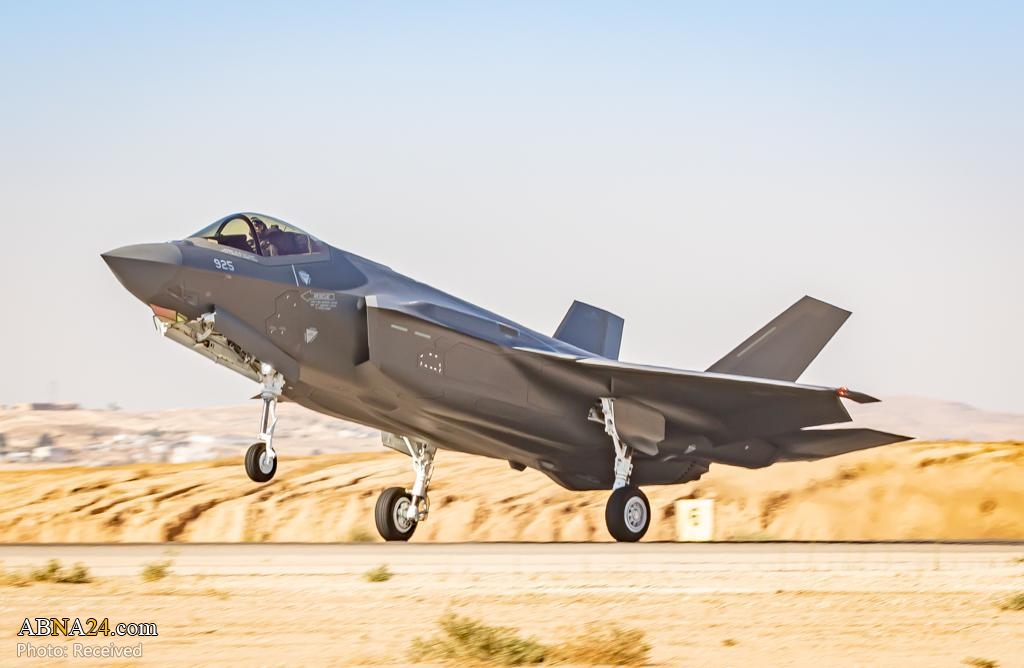AhlulBayt News Agency (ABNA): Many Israeli and foreign experts suggest that the Israeli regime is suffering from structural weaknesses when it comes to the confrontation of security and military challenges, and even worse its supremacy factors against its enemies especially the resistant groups in the region are shrinking. At the same time, its vulnerability loopholes are becoming observable day by day while security and military officials are desperate to find solutions to the security downswing.
Yitzhak Brick, an Israeli army official, has warned about a “disaster” as a result of the excessive Israeli reliance on its air force and underestimation of the surface-to-surface missiles that are “encircling Israel.”
According to a piece published by Israeli Mia news outlet, the Israeli air force efficiency in the face of thousands of missiles existing in Iran, Lebanon, and Gaza is declining. Add to this, he said, the equipment the Iranian allies in Syria, Iraq, and Yemen have in their possession that forms a suffocating ring around the Israeli regime.
End of the golden era of Israeli air supremacy
The Israelis have always relied on their air force as the key supremacy factor in the past wars. Access to the latest generations of Western fighter jets and attack helicopters, state-of-the-art satellite spying facilities, and pilots and other personnel training at the highest levels by the US make Tel Aviv brag that it is the superior air force in the region.
The air force played a marked role in tipping the scales in favor of Tel Aviv in the Israeli-Arab wars of the 1960s, 1970s, and 1980s. In the 1967 war between the Israeli military and the Egypt-Syria-Jordan-Iraq coalition the Israeli fighter jets managed to destroy the Egyptian air force and armored brigades of Arab armies that were replete with tanks and acted as a strong point. That was while the Arab air forces outnumbered the Israeli air force in possession of the fighter jets– 970 vs. 300 fighter jets.
On June 5, the Israeli army launched a comprehensive operation on the Egyptian air bases in the Sinai Peninsula with 200 warplanes flying at the same time. They flew over the Red Sea and the Mediterranean to perplex the Egyptian air defense network. At the time, Egypt had procured a large number of radars and SAM-2 air defense missiles from the Soviets. Learning from the American pilot experiences in Vietnam War, the Israeli pilots knew that low-altitude flights can largely help them stay away from radar detection. And this worked for them. The Egyptian radars either detected them with delay or failed to detect them at all.
This superiority element, though offering an upper hand in the past wars, has now lost its efficiency as the new wars underwent changes in strategy and nature, leaving the Israeli leaders in the face of the big question of how to respond to the threats with new nature. For example, in the 33-Day war waged by the Israeli regime against the Lebanese Hezbollah in 2006, the Israeli air force did not do much despite its absolute air superiority, with the war ending with Israeli defeat and retreat.
Additionally, while the Israeli fighter jets bombed Syrian positions regularly for the so-called prevention of Iranian approaching the Israeli borders and also blocking ways of delivery of new-generation missiles to Hezbollah. But to Tel Aviv’s frustration, the attacks made no difference. A proof to this claim is the Israeli request for inclusion in the US Central Command (CENTCOM) area of operation.
Brick adds that in the future war, possibly thousands of missiles would be fired into the Israeli regime, causing a disaster as the air force is losing its strength and game-changing feature. The Israeli fighters would have difficulty countering missiles that would be also fired from mobile launchers. The launchers can change position fast before detection by the plane radars.
Resistance’s missile rope on Israeli neck
Warning about the weakness of the Israeli military strategy in the confrontation of new wars has so far been issued by Israeli military experts. On December 12, Yitzhak Brick, also Israeli Defense Forces (IDF) ombudsman, said that the army is unprepared for a new war waged by Tel Aviv, saying that a missile rope is encircling the Israeli regime.
The Israeli general said that the missiles would be fired from Lebanon, Gaza, Yemen, Syria, and Iraq at the Israeli strategic targets like power plants, desalination facilities, air force, army bases, ports, and the economic infrastructure.
He continued that Arrow missiles that are capable of countering enemy missiles are in small numbers and suffice only a few days. These missiles are good to address attacks seeking the destruction of strategic positions. For countering missile attacks on ordinary positions, Arrow interceptors are inappropriate. Each Arrow system missile costs around $3 million and the Israeli regime cannot afford them in large numbers for its limited economic capacity.
Strategic weakness in the fashion of facing the Iranian missile might is a case obvious from the Israeli media focus and analysis of the last week Iran’s Islamic Revolutionary Guards Corps (IRGC) drone and missile drills. Jerusalem Post in part of its spotlight on Grand Prophet 15 military drills said: “Iran used drones to attack a missile defense system and then fired a barrage of Zolfaghar, Zelzal and Dezful ballistic missiles. The drones were supposed to neutralize air defenses for the incoming missiles.”
So, the precision missile strikes of the Iran-led Axis of Resistance forces that can destroy the vital economic infrastructure of the Israeli regime in a few days and leave economic ruins to the Israeli leaders are another serious worry of the Israelis in future wars.
/129

